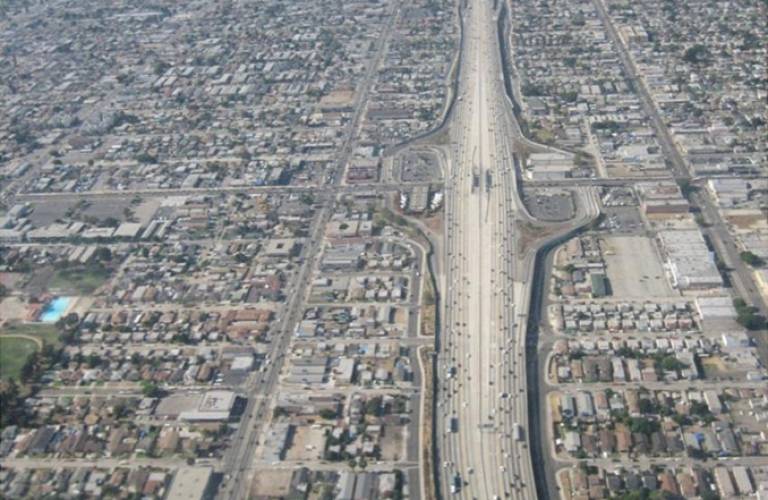Predicting and reducing excessive environmental noise in residential areas

10 December 2014
Authorities in Arizona are investigating more effective and cheaper ways to reduce noise exposure in residential areas after research at UCL demonstrated that traffic sound levels in urban areas located even 1/3 mile from the nearest freeway could be exceeding state guidelines.
In work with Professor Harindra Fernando at Arizona State University and funded by Arizona Department of Transportation, UCL's Dr Nick Ovenden (UCL Mathematics) modelled how noise travelled under meteorological conditions measured near the freeway, such as temperature inversions and wind shear.
They found that the model predicts excessive traffic noise levels over a third of a mile from the freeway, at levels that could exceed state guidelines on acceptable noise. The research also questioned the effectiveness of noise barriers under certain atmospheric conditions, because much of the sound can travel upwards to fairly high altitudes before being bent (refracted) back towards the ground.
The research was part of the Arizona Department of Transportation's (ADOT) 10-year programme to assess how well rubberised asphalt reduces traffic noise from urban freeways in comparison to alternatives such as noise barriers. If successful, the project could not only benefit public health by reducing noise pollution but also save the state money, as the typical concrete noise barriers used in Arizona are very expensive, at a cost of around $1 million per mile.
" In some conditions, the researchers here found that while sound levels remain close to what traditional sound models would suggest at ranges of 200-300 meters, noise levels can actually increase at ranges of 300 meters and beyond, creating conditions in which regulatory limits are exceeded at these greater distances. - Acoustic Ecology Institute 2009 Review Newsletter
The standard model ADOT currently uses for assessing the environmental noise impact of new and existing freeways does not include local meteorological effects, unlike the UCL model. The research suggests that typical meteorological conditions can easily defeat noise barriers that are erected based simply on blocking the line-of-sight to residential areas. As a result, ADOT has invited noise barrier manufacturers to present novel barrier designs for testing, with initial results due in 2016.
This research has also improved awareness internationally of how local meteorology affects the way noise is transmitted at a number of other organisations, including community groups. It stimulated some debate at the UK's Institute of Acoustics regarding wind turbine noise assessment.
Dr Ovenden contributed to assessment of the sound impact from a groundwater remediation project near Topock. The project is of interest to local tribes as the area is of great cultural significance to these communities.
Related links
Image
- Interstate 110 (Harbor Freeway) in South Central Los Angeles. Released into the public domain on Wikimedia Commons.
 Close
Close

